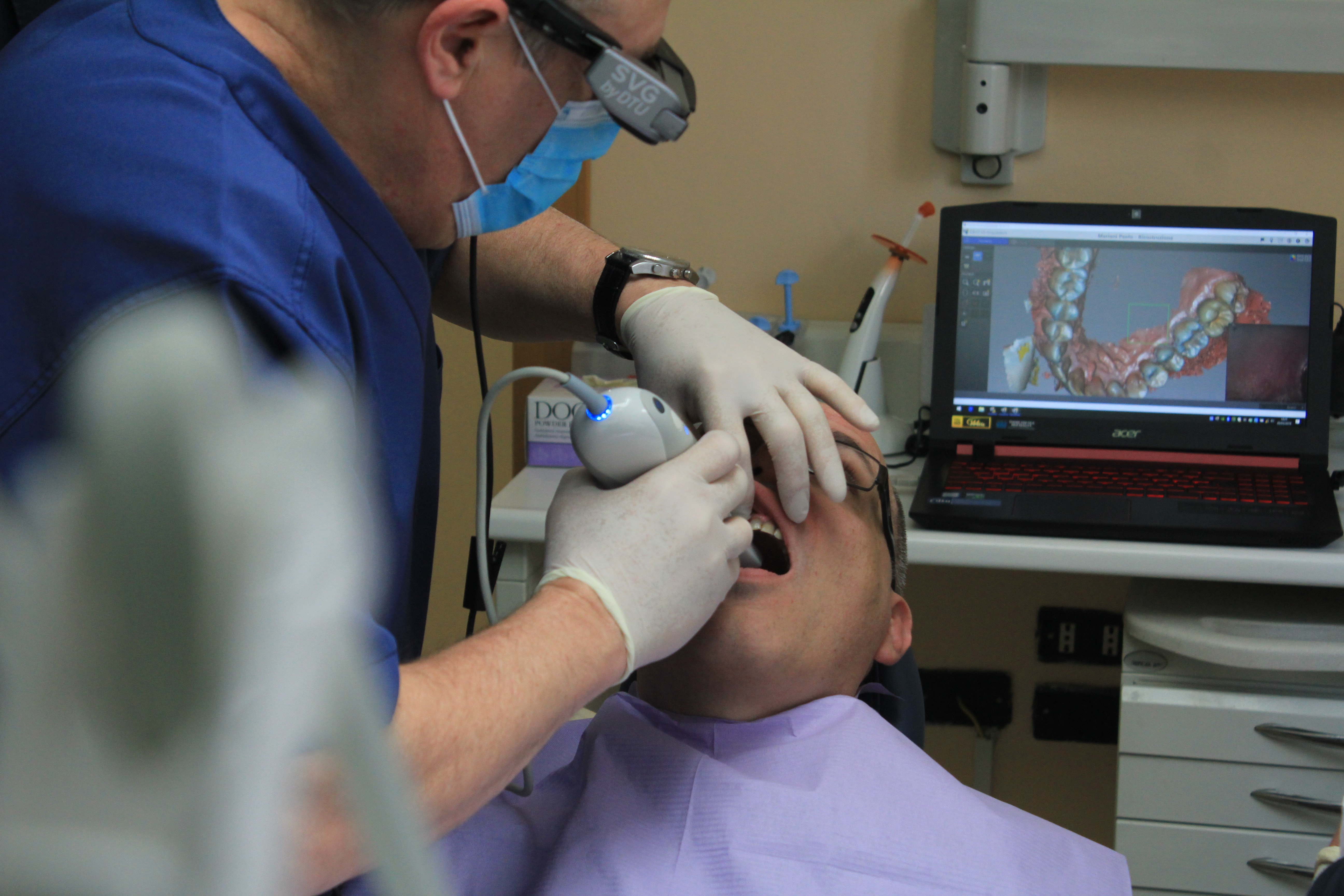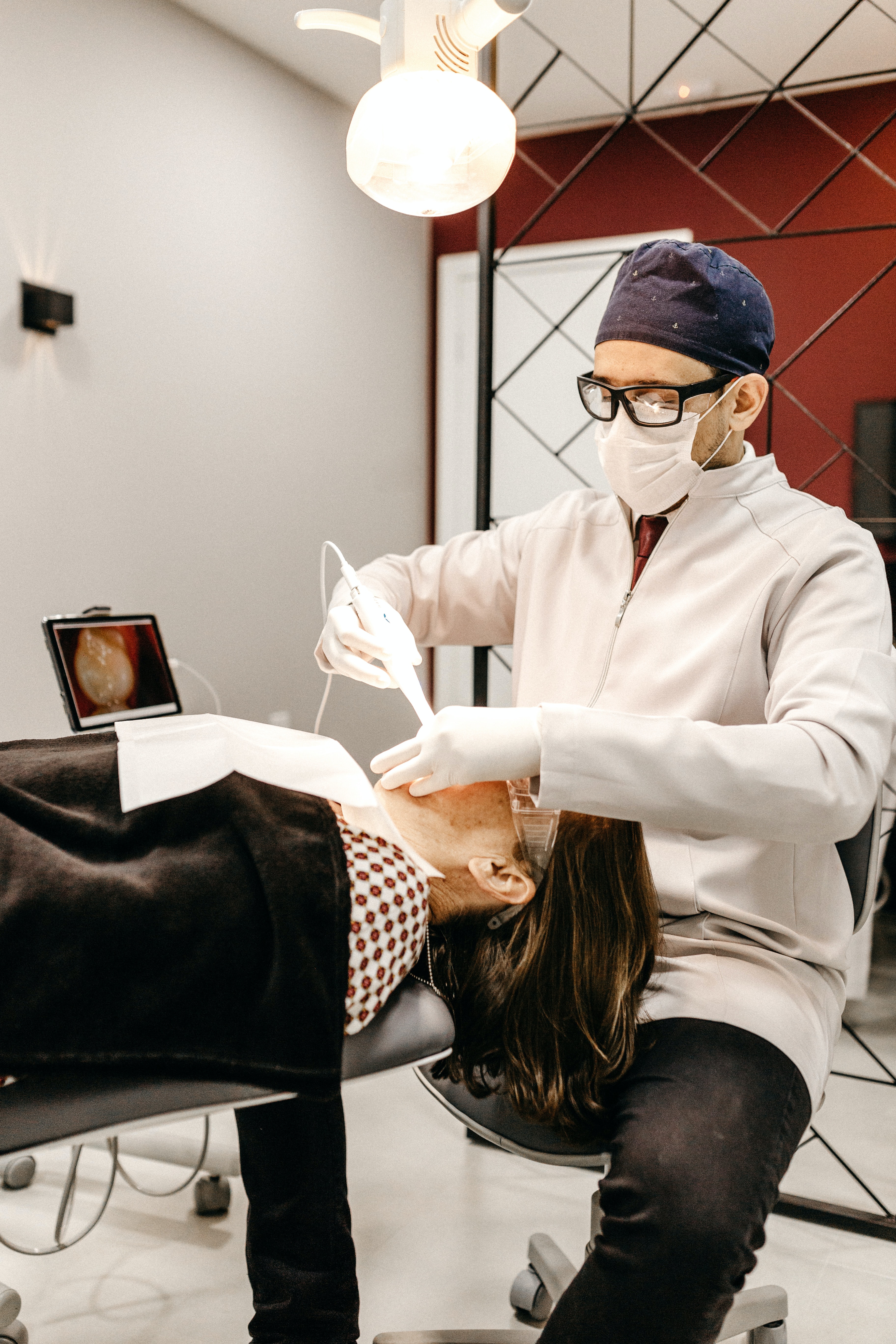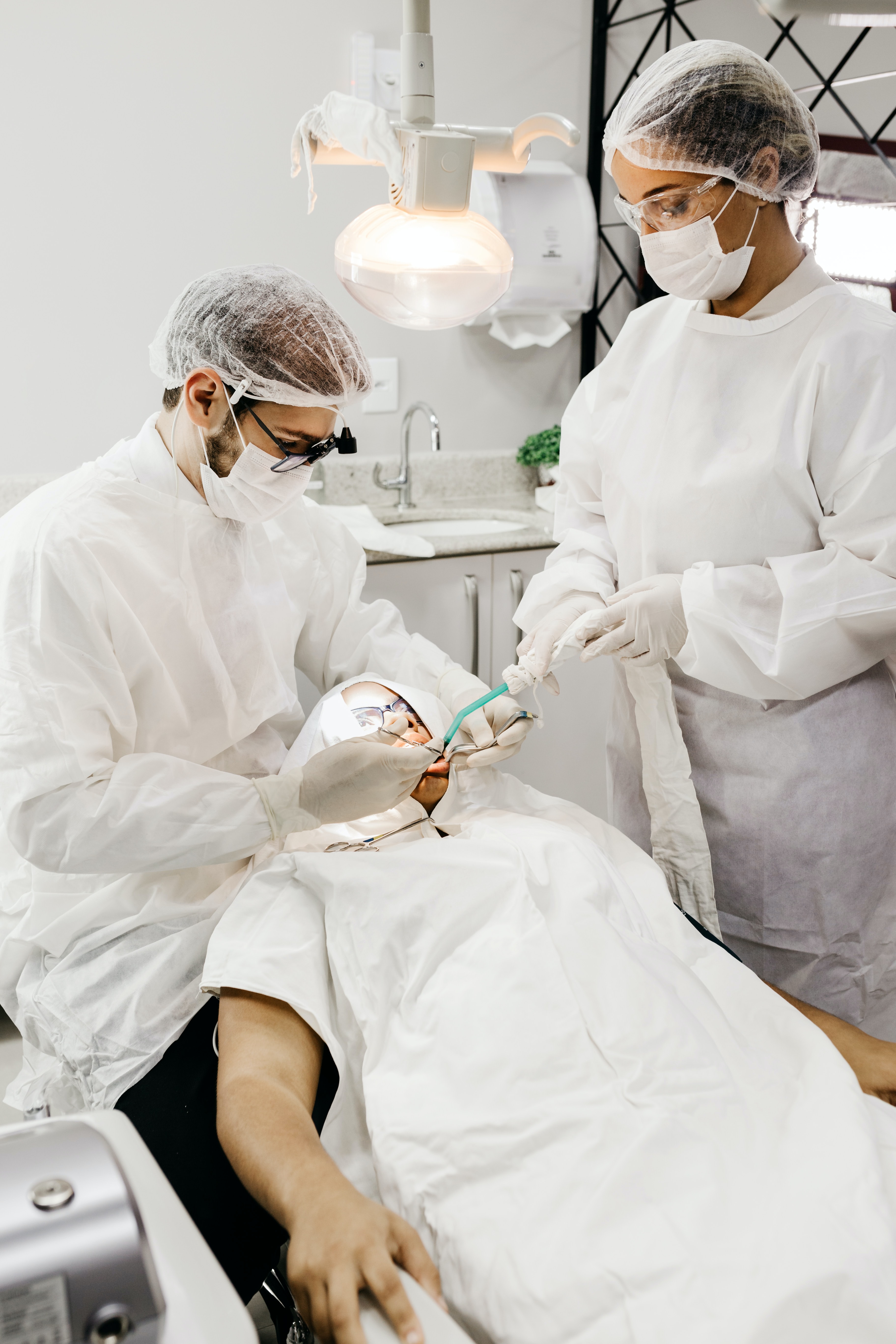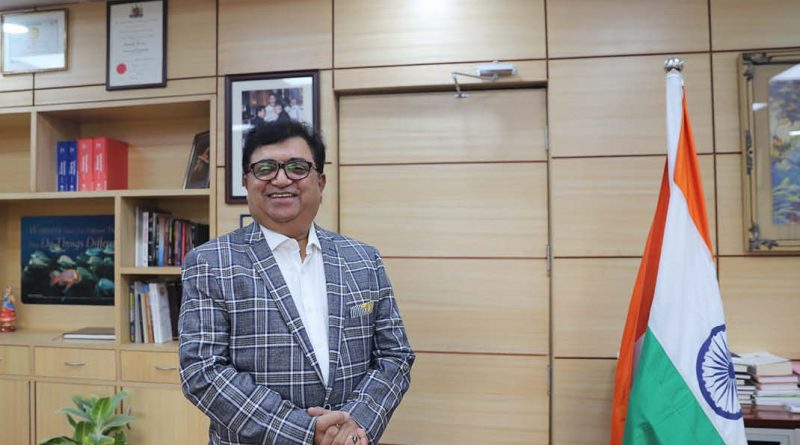Dentistry during Coivd-19
Saliva is rich in Covid- 19 viral load. Many patients who are asymptomatic may be carriers. For this reason, it is advised that all patients visiting the dental clinics/hospitals must be treated with due precautions….
By Prof. (Dr.) Mahesh Verma
In the current scenario of Covid-19 pandemic, the dentists, auxiliaries as well as patients undergoing dental procedures are at high risk of cross-infection. Most dental procedures require close contact with the patient’s oral cavity, saliva, blood, and respiratory tract secretions.
 Today we are especially dental community are continuing to adjust to the rapidly changing situation with Covid-19. We are focused on providing emergency dental care and giving people resources to help protect their oral health. As a dental specialist I advise to the dental practitioners is to exercise caution and make well-informed decisions about patient care and in the operation of their dental practices. As the situation evolves, we have adopted government’s guidelines to ensure the safety of the patients, staff and community.
Today we are especially dental community are continuing to adjust to the rapidly changing situation with Covid-19. We are focused on providing emergency dental care and giving people resources to help protect their oral health. As a dental specialist I advise to the dental practitioners is to exercise caution and make well-informed decisions about patient care and in the operation of their dental practices. As the situation evolves, we have adopted government’s guidelines to ensure the safety of the patients, staff and community.
The dentist can handle many situations over the phone, like helping with a toothache or a filling or crown that has become loose. If you are unsure about your situation, our dentists are able to help. The dental clinics/ hospitals may be postponing non-emergency procedures, but our dentists can still make appropriate arrangements if one needs care.
In general, something qualifies as a dental emergency if it puts a person in a high-risk condition. For example, uncontrolled bleeding or a bacterial infection that causes swelling and interferes with breathing.
The impact of the SARS-CoV-2 (Severe Acute Respiratory Syndrome Coronavirus 2) has been unprecedented, especially in health care. Over whelming amount of information flooded to the point that dentists and specialists alike might feel more confused than knowledgeable, this can make decision-making a challenge. Dental community is no stranger to infection control and to treat patients with highly infectious diseases.
 With careful planning, modifications, and sound clinical judgment, it is certainly feasible to provide routine care to the patients during the pandemic and serve the community. Negative pressure ventilation operatories and/or air purifiers are good addition to contain the droplet transmitted diseases including Covid-19. It is of particular importance for health-care providers to take appropriate measures to minimize the risk of infection to their patients, themselves, and other members of the dental team.
With careful planning, modifications, and sound clinical judgment, it is certainly feasible to provide routine care to the patients during the pandemic and serve the community. Negative pressure ventilation operatories and/or air purifiers are good addition to contain the droplet transmitted diseases including Covid-19. It is of particular importance for health-care providers to take appropriate measures to minimize the risk of infection to their patients, themselves, and other members of the dental team.
Standard precautions that apply to all patients regardless of suspected or confirmed infectious diseases should be supplemented by transmission-based precaution to prevent spread of Corona virus. This, however, is not specific to Covid-19 and is applicable to other droplet transmittable diseases such as influenza or tuberculosis. It is understood that routine dental and surgical care should be delayed for these patients until resolution of illness.
As per the advisory given by the Ministry of Health and Family Welfare, all asymptomatic healthcare workers involved in the care of suspected or confirmed cases of Covid-19 are advised to take HCQ prophylaxis after medical consultation. The dental clinics will remain closed in the containment zone however, they can continue to provide tele triage. Patients in this zone can seek ambulance services to travel to the nearby Covid-19 Dental Facility. In the Red zone, emergency dental procedures can be performed.
 The dental clinics in orange and green zone will function to provide dental consults. Dental operations should be restricted to emergency and urgent treatment procedures only. All routine and elective dental procedures should be deferred for a later review until new policy/guidelines are issued. . Due to the high risk associated with the examination of the oral cavity, oral cancer screening under National Cancer Screening program should be deferred until new policy/guidelines are issued.
The dental clinics in orange and green zone will function to provide dental consults. Dental operations should be restricted to emergency and urgent treatment procedures only. All routine and elective dental procedures should be deferred for a later review until new policy/guidelines are issued. . Due to the high risk associated with the examination of the oral cavity, oral cancer screening under National Cancer Screening program should be deferred until new policy/guidelines are issued.
The dental clinics will remain closed in the containment zone however, they can continue to provide tele triage. Patients in this zone can seek ambulance services to travel to the nearby Covid-19 Dental Facility. In the Red zone, emergency dental procedures can be performed. 3. The dental clinics in orange and green zone will function to provide dental consults. Dental operations should be restricted to emergency and urgent treatment procedures only. All routine and elective dental procedures should be deferred for a later review until new policy/guidelines are issued. . Due to the high risk associated with the examination of the oral cavity, oral cancer screening under National Cancer Screening program should be deferred until new policy/guidelines are issued.
All dental clinics must maintain air circulation with natural air through a frequent opening of windows and using an independent exhaust blower to extract the room air into the atmosphere. They should avoid the use of a ceiling fan while performing procedure and better to place a table fan behind the operator and let the airflow towards the patients. A strong exhaust fan is to be so located to create a unidirectional flow of air away from the patient. The window air condition system/ split AC should be frequently serviced, and filters cleaned. Use of indoor portable air cleaning system equipped with HEPA filter and UV light may be used.
 Protocols of patient handling in the clinic area
Protocols of patient handling in the clinic area
For appointments that do not result in aerosols, and need examination only wear a triple layer surgical mask and protective eyewear/face shield and gloves.
Wear N95 face masks, and gloves along with coverall for High Risk and very high-risk procedures.
To increase the shelf life of N95 masks, one may cover them with a surgical mask and discard only the surgical mask after use.
When examining patients with moderate risks the treating doctors must require all PPE as high risk except that the coveralls can be substituted with surgical gowns.
Practice non-aerosol generating procedures. Use of rubber dam is encouraged. The 4-handed technique is beneficial for controlling the infection.
Patient discharge protocol
The patient drape will be removed by the assistant, and the patient is asked to perform hand wash and guided out of the clinic towards reception and handed back his foot wears and belongings. The procedures and prescription is recorded only after doffing the PPE. Always focus on patients to perform hand hygiene and to be provided with review /follow up instructions.
Patient turn around and disinfection protocol
After the patient leaves the treatment room, the Assistant will collect all hand instruments immediately; rinse them in running water to remove organic matter and as per standard sterilization protocol.
All 3 in 1 syringe, water outlets, hand piece water pipelines, etc. should be flushed with the disinfectant solution for 30-40 seconds.
Remove water containers and wash them thoroughly and disinfect with 1% sodium hypochlorite using clean cotton/ gauge piece and then fill with fresh 0.01% sodium hypochlorite solution and attach back to the dental chair.
Then, disinfect the dental chair along with all the auxiliary parts within 3 feet of distance using 1% sodium hypochlorite and clean and sterilized cotton/gauge piece using inner to outer surface approach and leave for drying. New cotton/ gauge piece should be used for every surface. The areas include patient sitting area and armrests, dental chair extensions including water outlets, suction pipe, hand piece connector, dental light and handle, and washing area – slab and tap nozzle, clinic walls around the dental chair and switchboards.
The hand pieces should be cleaned using a hand piece cleaning solution to remove debris, followed by packing in the autoclave pouches for autoclaving. Impressions will be thoroughly disinfected before pouring or sending to the laboratory using an appropriate disinfectant. Remove visible pollutants completely before disinfection. Mop the floor with 1% sodium hypochlorite solution through separate mops for the clinical area following unidirectional mopping technique from inner to outer area. Wash and disinfect the mop with clean water and 1% sodium hypochlorite and leave it for sun-drying.
About author
Prof. (Dr.) Mahesh Verma, Padamshri Awardee And Dr. B. C. Roy Awardee Is Former Director Principal, Maulana Azad Institute Of Dental Sciences, New Delhi And Delhi Dental Council. Presently He Is President Of International Association For Dental Research (Iadr) India Division, International Association For Disability And Oral Health (Iadh) India Chapter, And Indian Academy Of Restorative Dentistry (Iard). He Has Also Been Elected As Indian Society Of Dental Research.
(The author is Vice Chancellor, Guru Govind Singh Indraprastha University, New Delhi)

